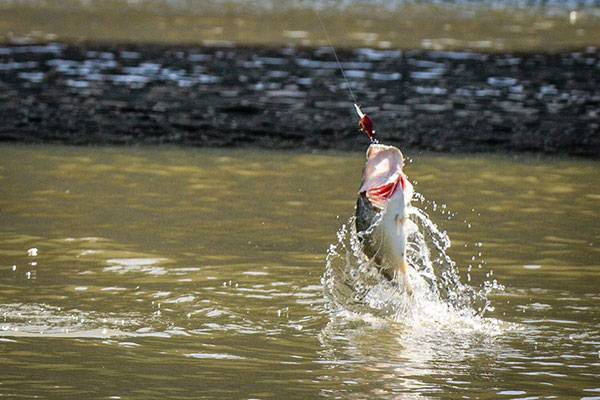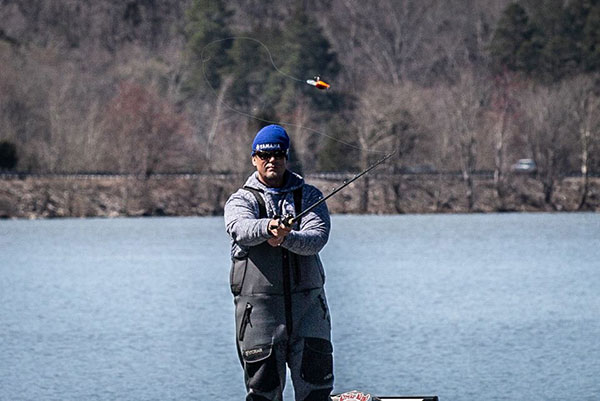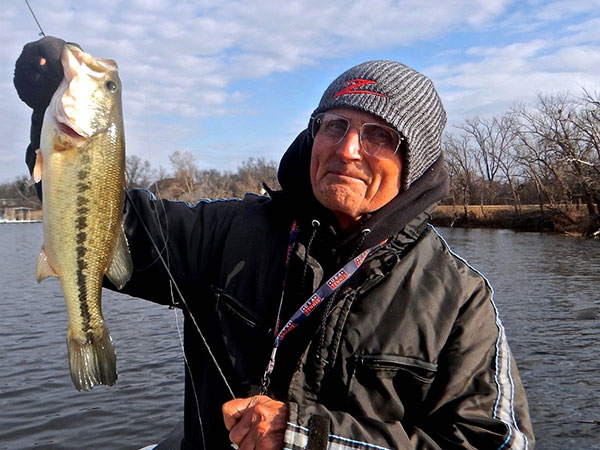- Details
St. Croix Report
Multiple catches of double-digit bass don’t happen by accident. Putting in the hours casting where giants live is the first step, but having the right equipment also helps. Just ask 41-year-old Alex Niapas of Boulder Creek, California.
Niapas has fished the lakes and impoundments of North-Central California’s Delta Region and Sierra Nevada foothills for nearly 30 years.
A St. Croix pro-staffer and tournament angler, the techniques, presentations, and gear Niapas employs are purposefully deployed to target the biggest bass that swim – spotted bass that can exceed ten pounds, and largemouth that have been known to grow over 20 by foraging on the abundant trout that thrive in California’s clear, deep lakes and reservoirs. His lures of choice are huge, trout-imitating swimbaits whenever forage and bass are shallow, and large, heavy jig combinations when fish are driven deep.
Earlier this month on December 3, when Niapas caught and released a 14-pound-eight-ounce largemouth from one of his favorite lakes, the fish were shallow.
“I made a last-minute decision to drive up to New Melones Lake where I’ve had pretty good success before,” says Niapas, showing his humility. The truth is, the soft-spoken angler who carries a big stick has caught numerous double-digit bass at New Melones over the years, including a 15-12 during a tournament in February of 2015 and a 17-14 in March of 2013. And he’s caught many more on other California lakes as well.
- Details
Seaguar Report
 Bass jumping
Bass jumping
Part of what makes crankbaits such an effective tool in bass fishing is their ability to match a variety of forage. These baits come in many different sizes, diving depths, styles, actions, and a rainbow of color options.
While some months may be a little confusing, some guesswork is eliminated during the coldest months of the year as Bassmaster Elite Series pros Keith Combs and Brandon Palaniuk each reach for one type this time of year: flat-sided crankbaits.
Combs' Cold Water Cranking Approach
 Keith Combs Casting
Keith Combs Casting
Texas pro-Keith Combs' affinity for crankbaits is well documented. He's scored major tournament wins with them and while most of the time it's with jumbo deep-diving baits, he knows there's a time and place for other baits.
"For me, a flat-sided crankbait is a cold water deal," he said. "That time will vary based on where you live. Here in East Texas, it's when the water is around 50 degrees, and somewhere further north, like Tennessee, for example, the window might be when the water is around the 40-degree mark."
While some might assume that cold means it's time to head to deeper water, Combs says that's not always the case. "You can still focus on shallow water, but you want to be close to deeper water."
That opens up various areas, according to Combs and much of it will depend on where he's fishing.
- Details
By Ted Pilgrim
 Coldwater Bass
Coldwater Bass
While you’re reading this, huddled around the warm glow of your computer screen, Ned Kehde is almost certainly on the water. So long as one of the dozen or so of his local community reservoirs near Kansas City remain ice free, Ned will be afloat, casting his little finesse jigs, and hooking astonishing numbers of coldwater bass.
“For years, our goal was to catch 101 bass in a four-hour trip,” Ned concedes. “These days, especially on cold winter outings, we’re content to fish for two to three hours between 11am and 3pm. On average, we’re still catching about ten bass per hour—just enough bites to keep this old codger warm.”
Now nearly 83 years young, Ned still fishes more than most, adding hundreds of clicks to his well-worn fish-counter. Recently, between trips, we caught up with our friend, the legendary Ned Kehde, to talk shop and discover his latest tricks. As he’ll graciously tell you, anyone can catch bass with Midwest finesse . . .
Where are you fishing these days and what’s happening in these fisheries?
Kehde: Nowadays, we’re focusing on our many community reservoirs, catching largemouth bass on shallow water flats endowed with coontail and curly-leaf pondweed. Curly leaf, or crispus, is a winter-hardy aquatic plant that grows and produces foliage and oxygen all through the cold months. Finding either of these species can be a winter bass goldmine, especially while other anglers target submerged brushpiles and offshore structure. Contrary to the notion that coldwater bass stick to deep water, we continue catching bass in 5 to 10 feet of water all winter long.





